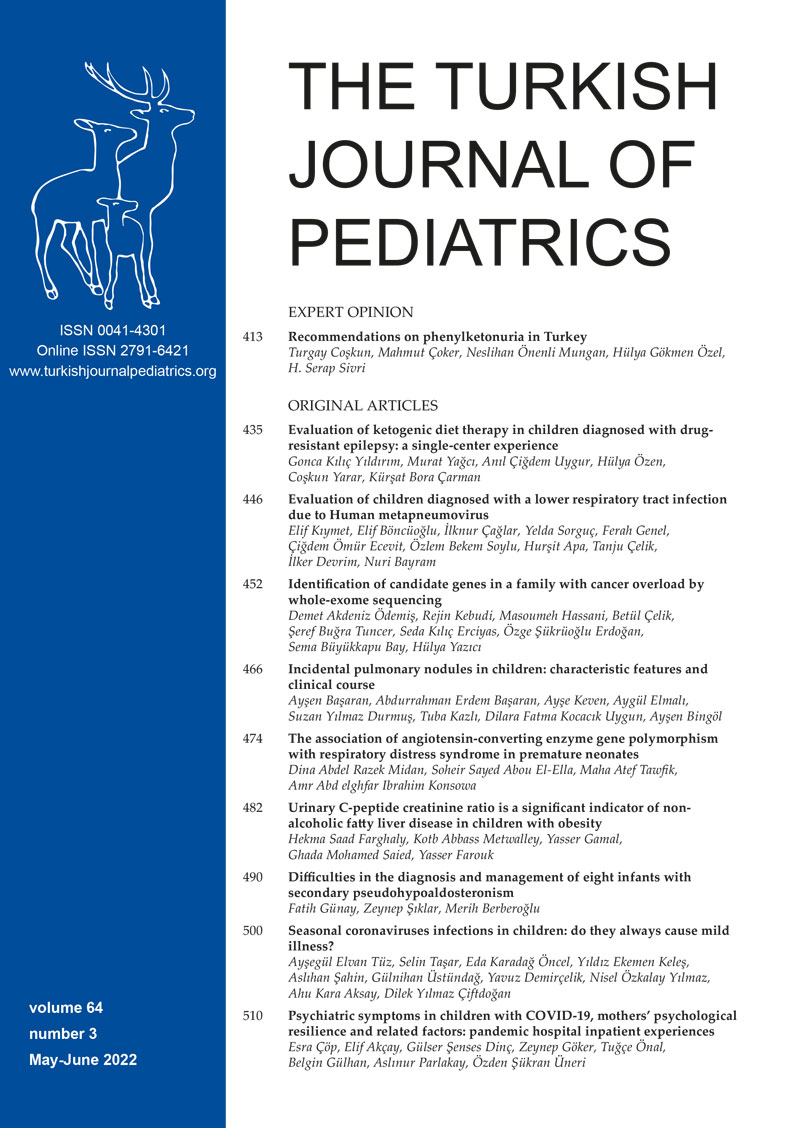Abstract
Background. Heterozygous intragenic mutations of the hepatocyte nuclear factor 1 homeobox b gene (HNF1B) located on chromosome 17 and microdeletion of 17q12 region (17q12MD) leads to the complete loss of this gene, which causes renal cystic disease, diabetes mellitus (MODY5), hypomagnesemia, hyperuricemia, liver enzyme abnormalities, genital tract abnormalities and exocrine pancreatic insufficiency. In addition, patients with 17q12MD also have facial dysmorphism, neuro-developmental and neuropsychiatric disorders.
Case. A 16-year-old girl with obesity and mild facial dysmorphism was admitted to the hospital with symptoms of diabetes that started two days prior to her admission. She was diagnosed with severe diabetic ketoacidosis and treated accordingly. She had been followed up with the diagnoses of multicystic renal disease, hydronephrosis, hepatosteatosis, hypomagnesemia and hyperuricemia since the age of six. She had mild intellectual disability. Her menarche started two months ago. Cranial magnetic resonance imaging revealed mild diffuse cerebral and cerebellar atrophy and a partial empty sella. Her mother had diabetes, hypomagnesemia and mild intellectual disability and her maternal grandfather and uncle had diabetes. Her grandfather also had renal cystic disease. All of them are on oral antidiabetic medication. The genetic analysis of the patient and her mother revealed a loss of 1.6 megabases in chromosome 17q12.
Conclusions. MODY5 should be kept in mind in patients with diabetes who present with extra pancreatic findings, especially with renal cystic disease, more over, a genetic analysis including the study of 17q12MD should be carried out in patients who present with additional neuropsychiatric findings. Ketoacidosis can be seen in patients with MODY5. Ketoacidosis and renal anomalies and dysfunction are factors that increase and affect the severity of each other in these patients.
Keywords: 17q12 microdeletion, MODY5, intellecual disability, ketoacidosis, renal cyst
Copyright and license
Copyright © 2022 The Author(s). This is an open access article distributed under the Creative Commons Attribution License (CC BY), which permits unrestricted use, distribution, and reproduction in any medium or format, provided the original work is properly cited.














